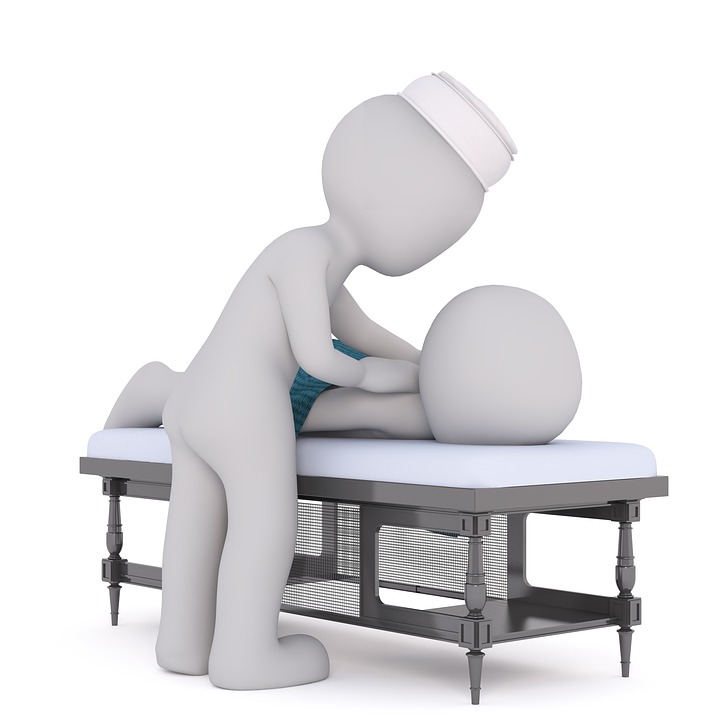This is a case scenario of a middle-aged female, who presented to our OPD with Fever and Sore throat for the last two months. This patient was extensively investigated before she was diagnosed with a relatively common disease. Healthy comments and criticism will be appreciated.
Case presentation – Fever and Sore Throat
A middle-aged female presented to the OPD with two months history of high-grade intermittent fever with drenching sweats. The fever was documented as 102 F and 103 F on various occasions, not associated with rigors or chills.
The patient also had a sore throat, mild episodic dry cough, and occasional headaches. There was no history of painful swallowing or any lumps in the neck. The patient denied any history of flu, rash or body aches but she reported marked weight loss over these two months.
Rest of the systemic inquiry was unremarkable.
She got treatment including antibiotics on multiple occasions but the fever did not settle. She remained admitted with the same complaints in a hospital and was extensively investigated.
On Examination in our OPD:

She was running a temperature of 103 F. Vital signs were stable and so was the rest of the systemic examination except for a mildly tender neck.
Investigations done during her admission in the previous hospital:

She remained admitted for about two weeks (before presenting to our OPD) in a Hospital and was extensively investigated. Reports of her investigations are given below:
| Blood CP | 04-10 | 05-10 | 08-10 | 18-10 |
| Hemoglobin gm/dl | 10.8 | 10.7 | 10 | 11.1 |
| WBCs (per ul) | 17100 | 14700 | 14000 | 4470 |
| Platelets (x1000/ul) | 359 | 340 | 382 | 587 |
| ESR (mm in the first hour) | 50 | 75 |
- Liver Function Tests, Renal Function Tests, Chest Xray, and Urine Analysis were Normal
- Brucella Antibodies: Negative
- Thyroid Function Tests:
- S.TSH: 0.071 mIU/l (Normal: 0.34 – 5.60)
- Total T3: 1.15 ng/ml (Normal: 0.87 – 1.78)
- Total T4: 8.81 ug/dl (Normal: 5 – 13)
- Quantiferon TB Gold test: Negative
- Antinuclear Antibody Test (ANA): Negative
- anti-dsDNA: Negative
- Ultrasound Abdomen: Normal
- Ultrasound of the Axilla: 1×1 cm lymph node in the right axilla
- Ultrasound breast: Hypoechoic lesions suggestive of a fibroadenoma
- Echocardiography: Normal Echo (No vegetations seen)
- CECT Abdomen:
- Few tiny calcific foci in the left lobe of the liver – could represent calcified granulomas
- distended gallbladder with cholelithiasis
- Multiple Uterine Fibroids
- CECT Chest:
- Multinodular goiter
- Calcified nodule in the right lower lobe of the lung
- No consolidation, cavitation or effusion
- FNAC (Fine needle aspiration cytology) of the axillary lymph node: Reactive changes
Treatment given to her during her prior admission:
The patient was initially treated with antibiotics including Meropenem and Vancomycin. When her fever persisted despite broad-spectrum antibiotics, she was advised Bone marrow biopsy and culture which she refused. she was started on anti-tuberculous therapy and anti-thyroid drugs (carbimazole 30 mg/day).
Question:
- How should we proceed further in this case?
- What is the possible diagnosis or differential diagnosis?

Follow up of our patient …
After examining the patient, a presumptive diagnosis of Thyroiditis was made.
She was advised a repeat serum TSH, anti-Thyroid peroxidase antibodies and a thyroid scan.
S. TSH: 0.005 uIU/ml
antiTPO antibodies: <5.0 IU/ml

A cold thyroid scan in the presence of a hyperthyroid state is suggestive of thyroiditis. She was started on beta blockers, steroids, and analgesic medications and her anti-tuberculous medications were stopped.
Patients showed marked improvement. Her fever and neck pain settled and she started gaining weight.
Read about Thyroiditis here …

